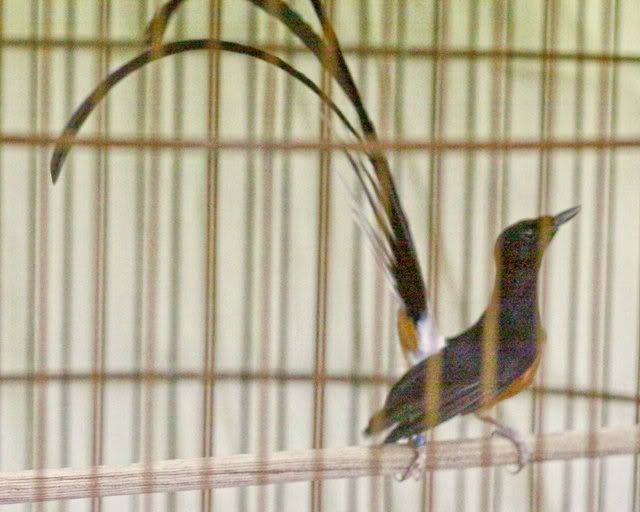
1. The maximum length of a shama’s tails is fixed by its genes. By “tails”, I mean only the 2 longest, or primary, tails as these are the ones that affect the shama’s look. No amount of care or correct feeding will cause the tails to exceed the length programmed by its genes. If the shama has inherited the genes that determine that the maximum length of the tails is 7” than they can only grow to this length at the most.
2. While the maximum length is fixed by genes, in captivity, shama tails often do not reach their maximum length. This is especially so with males with long tails. By long, I mean in excess of 11”. The length of the tails or the quality of the tail feathers can be adversely affected by stress factors during the moult. These stress factors can take the form of improper or insufficient food, proper care such as regular baths or frights. I consider them below.
3. To ensure that the shama has a good moult and that its tails grow well, it will need to consume the type of food that will assist it to moult well. Bear in mind that the feathers comprise about 20% to 25% of a shama’s entire weight. Feathers are made up largely of protein. Without an adequate protein diet, the bird is not going to have a good molt and this will be especially apparent in the feathers of the primary tails.
4. Usually, the body will moult before the tails. Good quality food should be fed to the shama when the body feathers start to appear dry. This may be about a month before the tails drop
5. If you are feeding dry food as the main source of food for the shama, increase the live food before and during the moult. To ensure that the bird will continue to eat the dry food, the live food should be offered in the morning or in the evening. If the live food is offered throughout the day, the bird will tend to wait for the live food and neglect the dry food.
6. I have moulted my shamas with only live food or with dry food supplemented by live food. Both methods have resulted in shamas with good moult. The advantage of dry food is that it is easier to feed. Also, after the moult, when the bird is required to eat dry food, time need not be spent in converting the bird from live to dry food.
7. The best source of protein is fish and frogs and the moulting bird should have a good supply of it during the moult.
8. Care should be taken to ensure that the same food that the bird had been taking before the commencement of the molt continues during the molt. Under no circumstances should the food be changed or experiments carried out to trial new dry food during the molt. The shama’s digestive system needs time to adjust to new foods and if these are introduced during the molt the shama may not eat well.
9. “Stress” or “fret” lines are semi-transparent lines running horizontally along the length of the shama’s tails. They show the times when the bird did not eat well when the tail feathers were growing. The tails will often break off at these lines before the next moult.
10. Stress on the bird will also cause the tails to be shorter than their maximum potential length or they may not grow well.
11. Incorrect feeding can result in the tails shedding more often than once a year and when this happens (especially if it occurs often), the tails will be shorter than their maximum potential length.